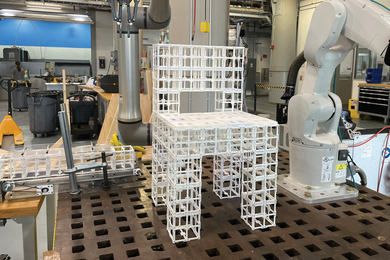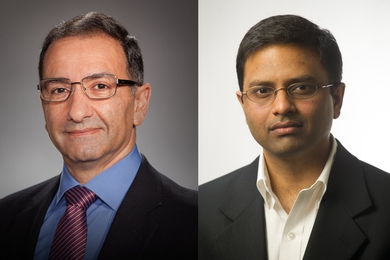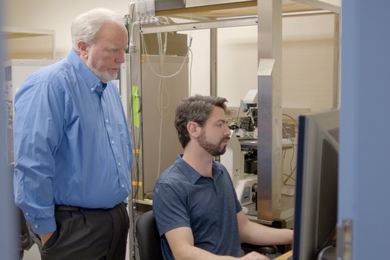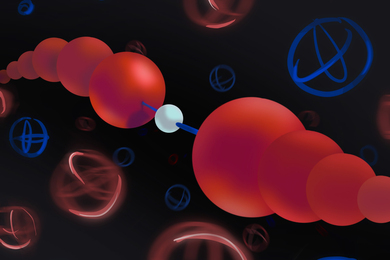The Department of Materials Science and Engineering has announced that two faculty members and a visiting professor have received named professorships.
The first holder of the the Stavros V. Salapatas Professorship in Materials Science and Engineering is Dr. Carl V. Thompson, a leader in the area of metallurgical thin films and interconnections in integrated circuits.
This professorship was one of two established in 1996 with a $4 million gift from Dr. Vasilios S. Salapatas, an MIT alumnus (SM 1966, PhD) and the managing director of Helliniki Halyvourgia, S.A., of Athens. Professor Lorna Gibson was announced two years ago as the first holder of the Matoula S. Salapatas Professorship. The chairs are named after Dr. Salapatas's deceased parents.
"Professor Thompson has applied the principles of metallurgy to improvement of the reliability of integrated circuits, providing new design methods and rules for improved performance. This support provided by Dr. Salapatas will help MIT maintain its leadership in the metallurgy of emerging products," said Thomas W. Eagar, department head and POSCO Professor of Materials Science and Engineering.
Professor Thompson received the SB from MIT (1976) and the SM and PhD from Harvard (1977 and 1982). He joined MIT as an assistant professor in 1983, was promoted to associate professor in electronic materials in 1987 and became a full professor in 1992.
Professor Thompson's research focuses on the processing and reliability of thin films for electronic applications. His awards include the Alexander Von Homboldt Research Award for Senior US Scientists for research in Germany. He is a past president of the Materials Research Society and has been principal editor of the Journal of Materials Research.
Associate Professor Gerbrand Ceder is the first holder of the Union Mini���re Professorship. Union Mini���re of Belgium produces more than 20 nonferrous metals for basic and advanced technology industries and for the construction sector.
Professor Ceder is a world expert in computational materials science, having been one of the first people to predict the properties of a material before it was ever synthesized in the laboratory.
"The department has identified computational materials science as one of the three major activities to be developed over the next decade. This support from Union Min���re for Professor Ceder, who is a recognized leader in this field, will assist the entire department in strengthening this effort," Professor Eagar said.
Professor Ceder graduated from Catholic University of Leuven in 1988 and received the PhD from the University of California at Berkeley (1991), after which he became an assistant professor at MIT. His work focuses on the first-principles prediction of phase stability and properties of oxides. He developed the use of atomistic computational modeling techniques to investigate and design engineering materials.
Dr. Claude H.P. Lupis has been announced as a visiting professor and holder of the Danae and Vasilis Salapatas (1961) Professorship of Ferrous Metallurgy for a five-year term.
"Professor Lupis brings a wealth of experience not only in the traditional areas of chemical metallurgy, but also in environmental and economic analysis of large-scale metallurgical systems. These topics are becoming the limiting factors for technological development in many parts of the world," Professor Eagar said.
Professor Lupis graduated from the University of Paris (1959), the Institut d'Administration des Entreprises (1960) and the ������������������cole Nationale Superieure des Mines de Paris (1961). He received the ScD from MIT in 1965. He was professor of metallurgy and materials science at Carnegie-Mellon University before entering industry in 1980. He returned to academia and MIT in 1997.
Professor Lupis's technical expertise is in the area of thermodynamics and kinetics and their application to the processing of metals and materials. He has been a Ford Foundation Fellow and a recipient of the Senior US Scientist Award of the Alexander von Humboldt Foundation.
A version of this article appeared in MIT Tech Talk on December 9, 1998.





